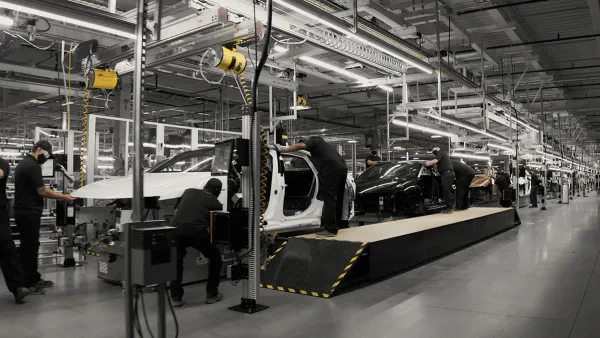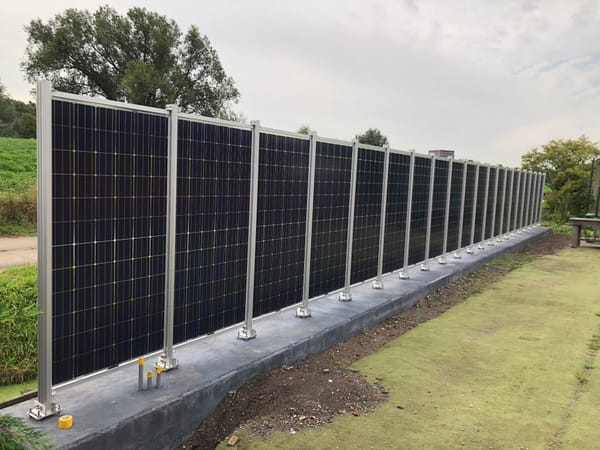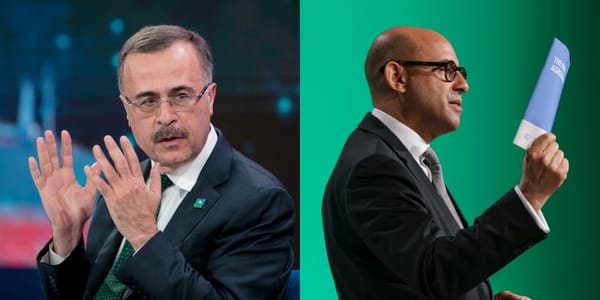How can the World Bank fight climate change? And lots of explainers
Earlier this year Ajay Banga was named CEO of the World Bank. Climate change proponents are hoping he’ll do a repeat act of is Mastercard magic for his new charge, zapping it with more forward-thinking energy and moving the institution known for funding
Hey guys! I'm back with our second edition. I really appreciated your positive feedback last week. It's always great to hear from real humans after you put something new out into the ether. As always, if you have any thoughts or comments, please drop me a note at mike@heatrising.net.
Chart of The Day
1. The World Bank is (sorta) being enlisted to fight climate change
Ajay Banga took over Mastercard soon after it went public in 2010, then energized its culture and turned it into a $300 billion company. Earlier this year Banga was named CEO of the World Bank. Climate change proponents are hoping he’ll do a repeat act for his new charge, zapping it with more forward-thinking energy and moving the institution known for funding large dams and coal plants towards helping poor nations adopt green energy projects.
- Member nations are pressuring the Bank to lend more to green energy projects, but those tend to be riskier than its typical lending targets. Last year the World Bank committed $115 billion in loans.
- The Bank estimates addressing climate needs would require $2.4 trillion in total annual spending by all countries and institutions through 2030.
- Developing nations are calling for rich nations to contribute more capital for green projects, but all (including the US) have ignored the requests.
- The Bank gets capital (funding) from member nations, but most money comes from offering bonds with AAA-ratings on capital markets, which limits its ability to make risky lending bets.
- The recent U.N. IPCC report on climate change pointed out that while green energy is moving forward in rich nations, it has mostly stalled in developing nations and finance will be a key tool for halting climate change.
- The previous Bank president, David Malpass, appointed by President Donald Trump, was a climate change denier.
Sources: Politico / Climate Change News / WSJ / NYT
2. Is nuclear power green? The EU is brawling over it.
A coalition of environmental groups are suing the European Union government to declassify natural gas and nuclear power plants as “sustainable”, and thus eligible for green finance tax breaks in the EU. Meanwhile, last week Germany shut down the last of its nuclear plants, part of a plan initiated in 1998 by a Green-led government campaign to close the country’s then 33 nuclear reactors.
- The Austrian government is also separately challenging the sustainability label
- A judgment isn’t expected unto 2025
- In contrast, the US is lending Poland $4 billion to build 20 small nuclear plants
Sources: AP / Reuters / Climate Home News
3. EV school buses are coming
Suburban school buses are the perfect candidate for EV replacement: They go 20-40 miles twice a day, are available for a midday recharging break, and return home each night for charging again. Replacement cuts energy consumption, reduces carbon emissions, and eliminates tailpipe soot. But a new diesel bus costs about $170,000 while a new electric bus costs about $500,000, including charging infrastructure. In steps the Inflation Reduction Act, which provides $5 billion in EV bus subsidies to school districts, in $1 billion annual chunks. Last year, school districts from Nevada, Wisconsin, Maryland, and everywhere else submitted $4 billion in grant applications.
Source: Bloomberg
4. Everyone’s got an explainer
These days, climate and green tech is not only drawing social justice types, but also big biz and thus the interest of the general public. So, it seems like every outlet has some kind of explainer on climate and green tech – and they’re pretty good! Want to better understand some stuff? Here’s some good explainers from the last week.
- The tricky plan to pull CO2 out of the air
- How solar energy got so cheap
- America needs clean electricity. These states show how to do it
- How electrification became a major tool for fighting climate change
- Adding capacity to the electricity grid is not a simple task
- The electric grid is about to be transformed
- A green hydrogen economy depends on electrolyzers. Here’s how the technology works.





